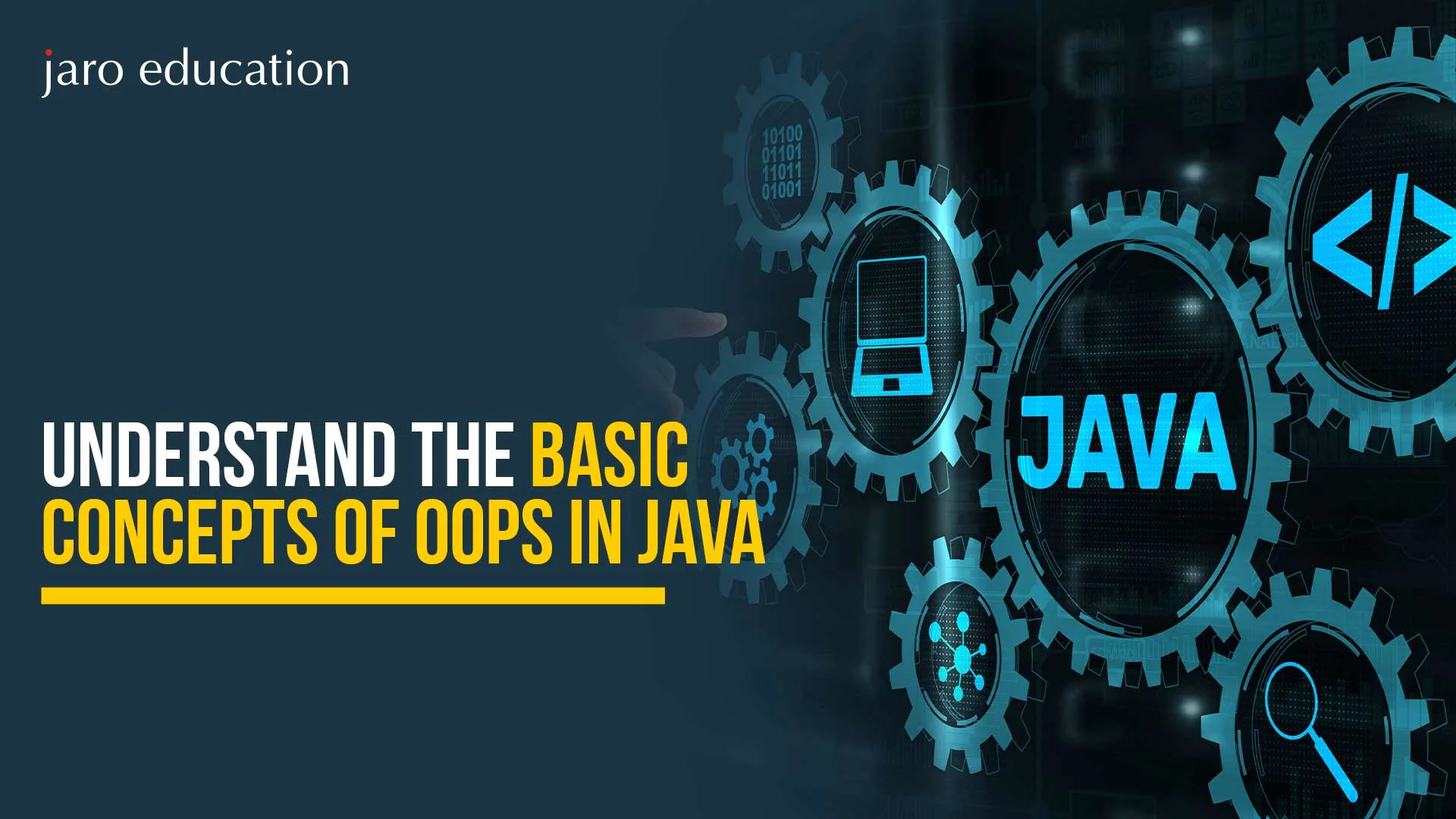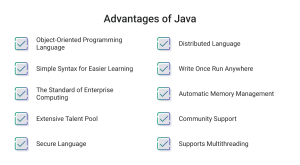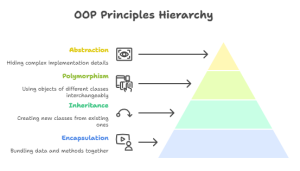
Understand the basic concepts of OOPs in Java
Object-oriented Java is a popular object-oriented programming language with a vast range of libraries, strong security features, and platform freedom. Programming (OOP) emphasizes using objects and their interactions to design and implement software. Building effective, scalable, and maintainable software applications requires an understanding of the fundamental OOP ideas in Java. This entails being familiar with the basic concepts of OOP in Java, including classes, objects, encapsulation, inheritance, polymorphism, and abstraction. In this blog, let us further understand the basic concepts of OOPs in Java.
Table Of Content
Define OOPs in Java
Basic Concepts of OOPs in Java
Get Ahead in your IT Career with an Online BCA Programme by Manipal University
Conclusion
Frequently Asked Questions
Define OOPs in Java
To define OOPs in Java, it refers to an Object-Oriented Programming System, a programming style that organizes software design around data, or objects, instead of functions and logic. It allows developers to model real-world things using classes and objects. This approach promotes code reuse, scalability, and modularity. When we define OOPs in Java, it includes key ideas like inheritance, polymorphism, abstraction, and encapsulation. These concepts all help create efficient, easy-to-maintain, and secure applications.

Basic Concepts of OOPs in Java
Classes and Objects
Classes are blueprints or templates that specify the characteristics and actions of things. They contain both the techniques (functions) that process the data and the data itself. A class is defined in Java by using the “class” keyword and the class name.
An object is an instance of a class. When employing the “new” keyword, an object can be formed. The dot notation can be used to access an object’s attributes and methods after it has been created.
The foundation of Java object-oriented programming is classes and objects. They offer a strong tool for developing intricate applications and enable the production of reusable code.
Encapsulation
Encapsulation is a fundamental concept in Object-Oriented Programming (OOP) in Java, and it refers to the practice of concealing an object’s internal workings from the outside world while providing a well-defined interface for interacting with that object.
Encapsulation in Java is accomplished by using access modifiers (public, private, and protected) to control access to class fields and methods. Access modifiers specify which class members can be accessed from outside the class and which can only be accessed from within the class.
The use of getters and setters, which are methods that allow the class to expose its internal state to the outside world while still maintaining control over how that state is accessed or modified, is another important component of encapsulation.
Inheritance
In object-oriented programming, inheritance is a fundamental concept that allows a new class to be based on an existing class by inheriting its properties and methods. The existing class is referred to as the “superclass” or “parent class,” while the new class is referred to as the “subclass” or “child class.” Inheritance allows for code reuse and aids in the development of a hierarchical class structure.
The subclass uses the “extends” keyword followed by the name of the superclass to inherit properties and methods from it. The subclass can then access the superclass’s public and protected members but not its private members.
Subclasses can also override their superclass’s methods by providing their implementation. This is referred to as method overriding. The subclass uses the same method signature as the superclass to override a method.
In Java, inheritance is a powerful mechanism for creating and organising classes. It enables code reuse, simplifies programme design, and allows developers to build complex systems easily.
Polymorphism
Polymorphism refers to an object’s ability to take on multiple forms. Polymorphism in Java is accomplished through two mechanisms: method overloading and method overriding.
Method Overloading: Method overloading allows you to define two or more methods in the same class with the same name but different parameters. Based on the number and type of arguments passed, the Java compiler determines which method to call. For example, you could define two “calculateArea” methods, one that takes a single argument for the radius of a circle and the other that takes two arguments for the length and width of a rectangle.
Method Overriding: When a subclass provides a specific implementation of a method that is already defined in its superclass, this is referred to as method overriding.
The signature of the method in the subclass (name, parameters, and return type) must match the signature of the method in the superclass. When you call the overridden method on a subclass object, the subclass method is called rather than the superclass method.
Polymorphism allows for code reusability, flexibility, and extensibility. It enables you to write code that can interact with objects from various classes that share a common parent class or interface. For example, suppose you have a “Shape” class with a “calculateArea” method. In that case, you can create subclasses for “Circle,” “Rectangle,” and “Triangle,” and each of these classes can implement the “calculateArea” method differently. This enables you to write code that can call the “calculateArea” method on any object of type “Shape,” regardless of its specific subclass.

Get Ahead in your IT Career with an Online BCA Programme by Manipal University
Conclusion
To summarise, understanding the fundamental concepts of OOPs (Object-Oriented Programming) in Java is critical for developing efficient, scalable, and maintainable software applications. We went over the fundamental concepts of object-oriented programming, such as classes, objects, encapsulation, inheritance, polymorphism, and abstraction. These ideas serve as the foundation for designing and developing robust, scalable software applications. With a solid understanding of these concepts, Java developers can write more effective and reusable code, reduce complexity, and improve overall programme design. By mastering these concepts, Java developers can easily create complex applications while also making their code more maintainable and easier to read. OOPs is a powerful paradigm that has transformed the way software is developed and understanding its concepts is essential for any Java developer who wishes to create high-quality applications.
Frequently Asked Questions
OOP in Java, or Object-Oriented Programming, is a programming method that organizes code into reusable objects. It focuses on real-world entities like inheritance, encapsulation, and polymorphism to create modular code.
Encapsulation in Java is one of the fundamental concepts of OOP. It protects data by binding variables and methods together. This makes OOP in Java a secure and organized way to code.

